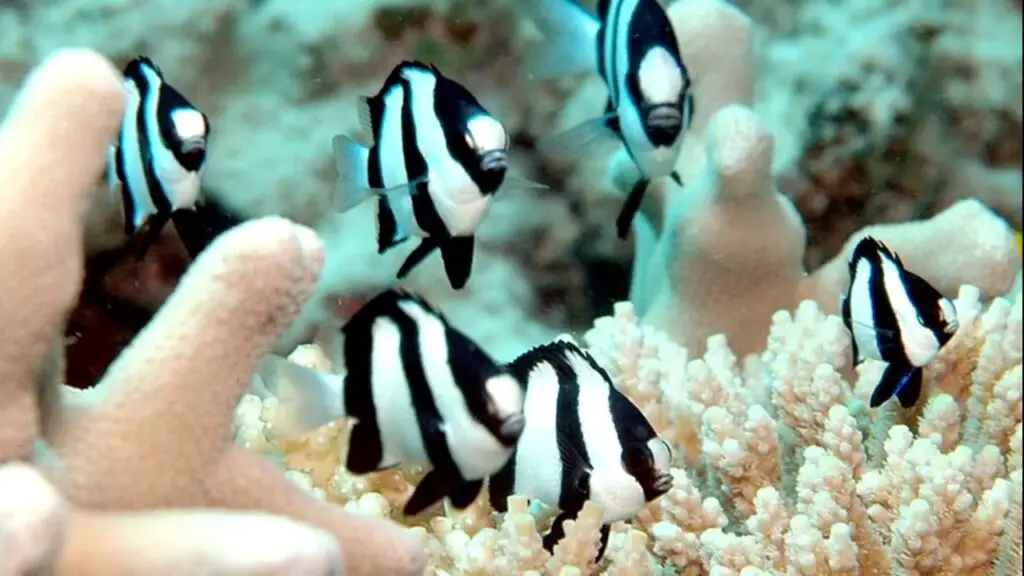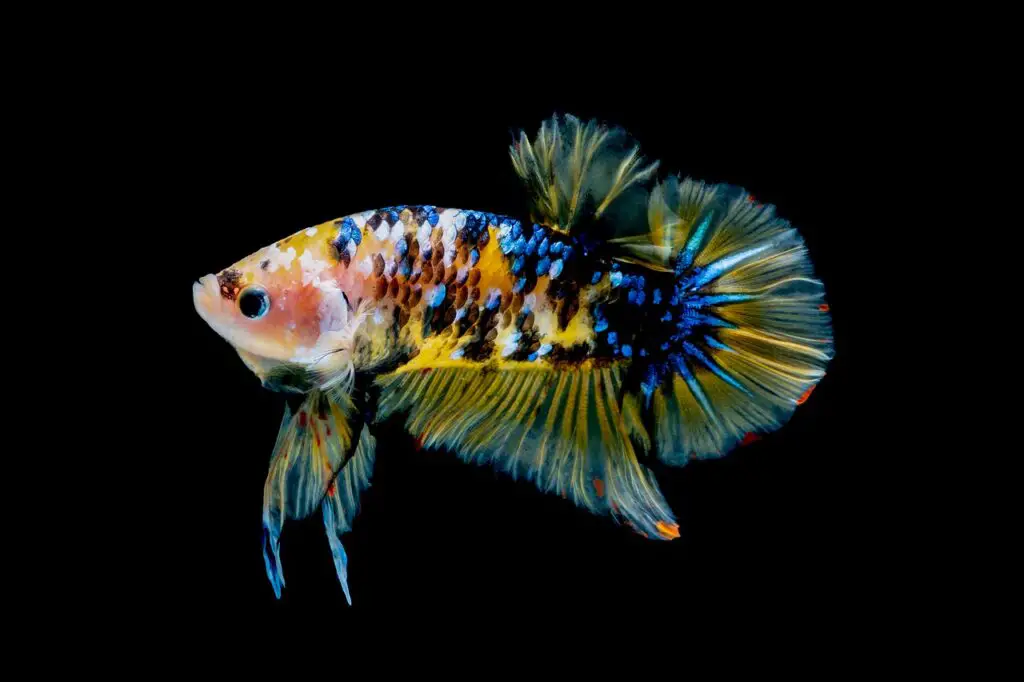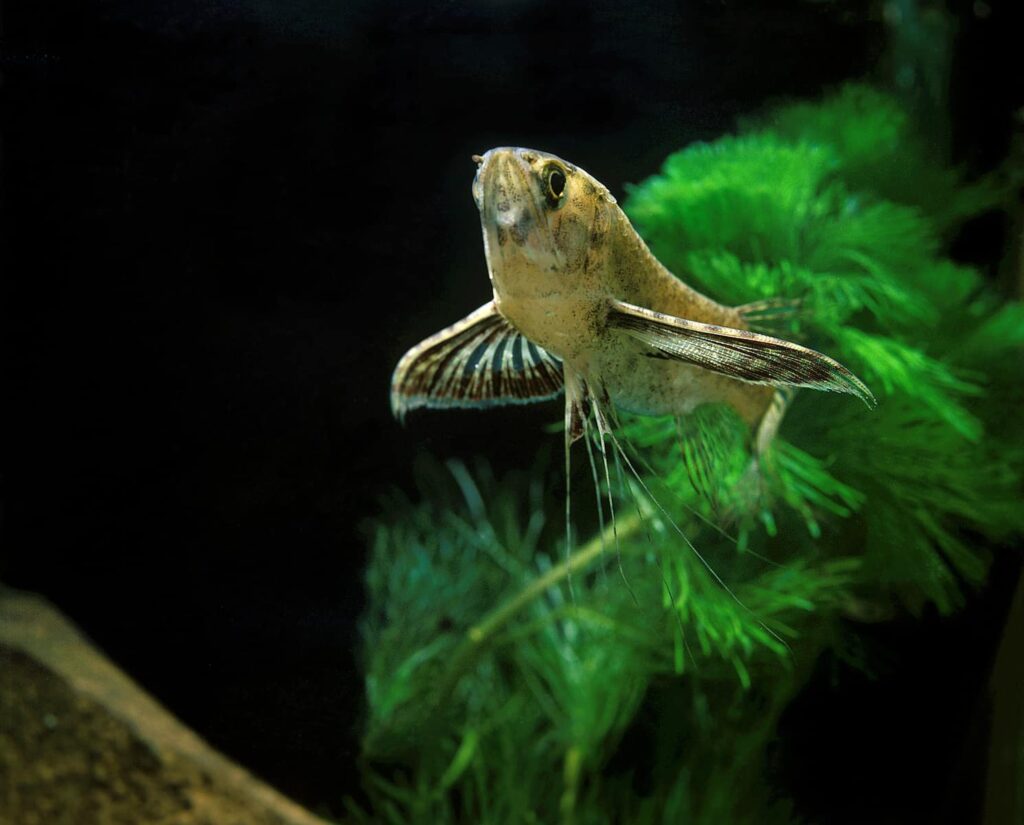Looking for a striking, feisty fish that gives as good as it gets? The three stripe damselfish could well be the best pick for your saltwater aquarium.
However, as with all saltwater fish, there are a few bits and pieces you’ll need to know about this critter before you adopt one, or a few of them! Did you know that the three stripe damsel is also known as the black and white humbug?
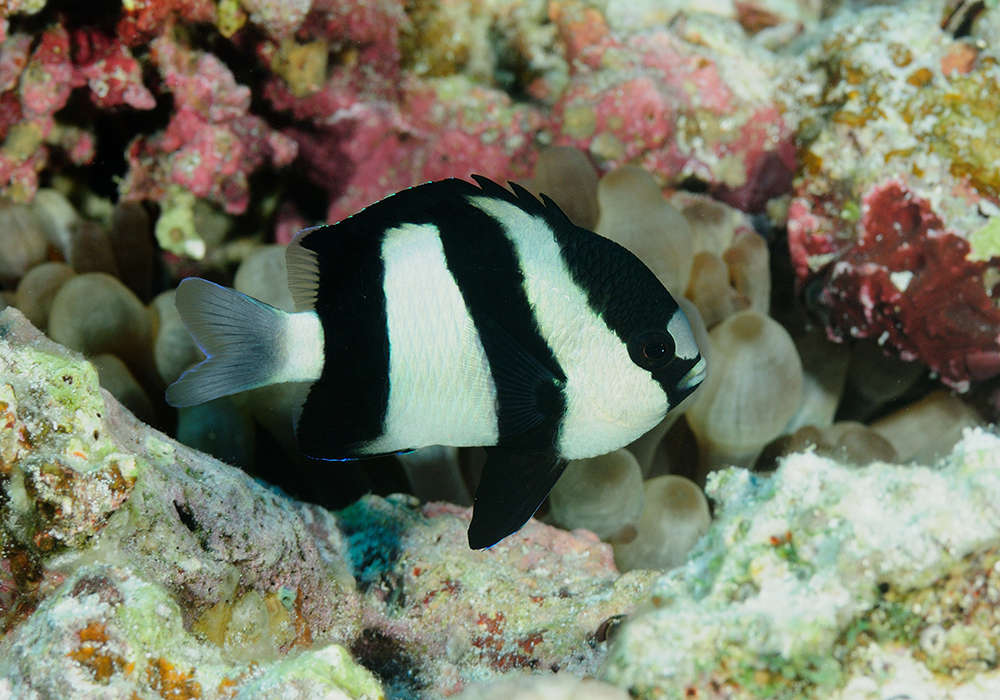
Here’s what you need to know about the three stripe damselfish and what to expect as an owner.
Quick Facts:
- Fish Lifespan: Up to 5 Years
- Tank Size: At least 30 Gallons
- Water Temperature: Between 72 and 78F
- pH: Between 8.1 and 8.4
- Hardness: Between 1.020 and 1.025 sg
- Compatibility: Compatible with Clownfish, Basslets, Angelfish
- Fish Size: Up to 4 Inches
How do you take care of three stripe damselfish?
The three stripe damselfish is a tropical saltwater fish that hails from the waters of Indonesia and Fiji, which means you can expect them to enjoy a pretty toasty tank of up to 78F. They tend to prefer more alkaline waters than most, so make sure you balance the pH carefully!
These fish can grow up to four inches in size, which means you should ideally be looking at a tank of around 30 gallons if you have two or three of the same fish. As with other damselfish, the three stripe damsel is infamous for being pretty aggressive to smaller fish and animals and can be very territorial. That’s why it’s a good idea to make sure you have plenty of room for them in the tank! Otherwise, they could get frustrated with not having anywhere to hide or to call their own space.
Three stripe damselfish will eat a variety of food, meaning you should really consider offering them flakes, herbivore selections, and a variety of meaty bits. Damsels have pointy little teeth, which are perfect for tucking into pieces of meat – so don’t discourage them from getting a protein fix here and there!
These fish tend to get more aggressive as they grow into adults, which means it’s a good idea to try and raise them alongside bigger fish as well as those with similar temperaments. However, it’s not recommendable to try and mix them with other damsels of different species, as they can really lock horns over territories in the tank.
Three stripe damsels are actually pretty easy to look after. This is mainly thanks to the fact their water demands aren’t that picky compared to other tropical beasts. They make for good starter pets in a saltwater tank because they are pretty hardy and will generally go about their own business. However, a big mistake to make is to place them in the same tank as fish or animals which are timid or shy by nature. They can have a habit of bullying other fish about!
Take a look out for larger fish and those with similar levels of temperament if you want to mix them. Again, the bigger the tank, the better, too.
Three stripe damselfish tank mates
Damsels tend to be pretty feisty no matter who they are tank mates with! However, always avoid putting one species of damsel in with another. That goes for the super-aggressive blue devils as well as the relatively mellow azure damselfish.
However, providing you offer plenty of space, you should find that three stripe damselfish get on peacefully with basslets and angels. They can live alongside clownfish, too, but caution is often advised. It’s never a good idea to mix damsels with timid fish such as cardinalfish, and you will certainly want to avoid mixing them with batfish and chromis.
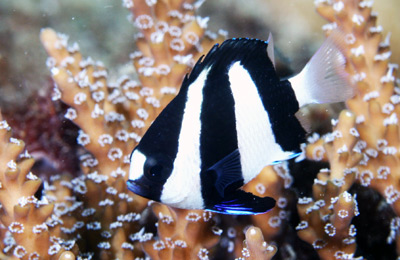
All damsels get a bit of a bad wrap for being pretty aggressive. It’s just their nature – and it doesn’t mean they can’t live alongside other aquatic creatures peacefully. However, if you do want to mix three stripe damsels with other fish, you absolutely have to be careful with the types of fish you put into the tank.
While damsels are very easy to look after when managing them alone, we’d probably recommend looking into a mixed aquarium only when you have a little saltwater fish keeping experience behind you. Otherwise, you might find yourself constantly breaking up fights!
As mentioned, if you are raising young three stripe damsels, make sure to raise them in a tank with bigger fish who aren’t likely to take a bite out of them. Look for bigger fish which aren’t needlessly aggressive, but which aren’t pushovers, either!
3 stripe damsel and clownfish
The three stripe damselfish can co-exist with some clownfish species, but again, caution is always advisable. As mentioned, damsels have a propensity to be fairly territorial. They won’t single out specific species!
However, the clownfish, on the whole, is pretty hardy and can look after itself. It’s also a similar size to the three stripe damsel, if not larger – which is likely to be a plus if you are raising your damsels from a young age. Do keep in mind, though, this doesn’t mean your clownfish isn’t going to scrap with your damsel at any point.
Clownfish are very resistant and will likely give as good as they get. This isn’t always a good thing, but it means you probably won’t have a fish that gets bullied into submission by the odd damsel hissy fit.
What you should absolutely NOT do is introduce the big, brutish maroon clownfish into the same waters as a damsel of any kind. Maroon clownfish are lovely to keep on their own but are known for being very aggressive – perhaps more so than some of the feistiest damsels in the tank.
Therefore, to avoid a true recipe for disaster, make sure that you keep these critters separate – and look for a common or tomato clownfish, for example, instead.
3 stripe damsel tank mates
As mentioned, the three stripe damselfish can be pretty territorial. 3 stripe damsel tank mates must, of course, enjoy similar temperature waters and pH levels. However, it’s also good to set up plenty of hiding places for both the damsels as well as their tank mates.
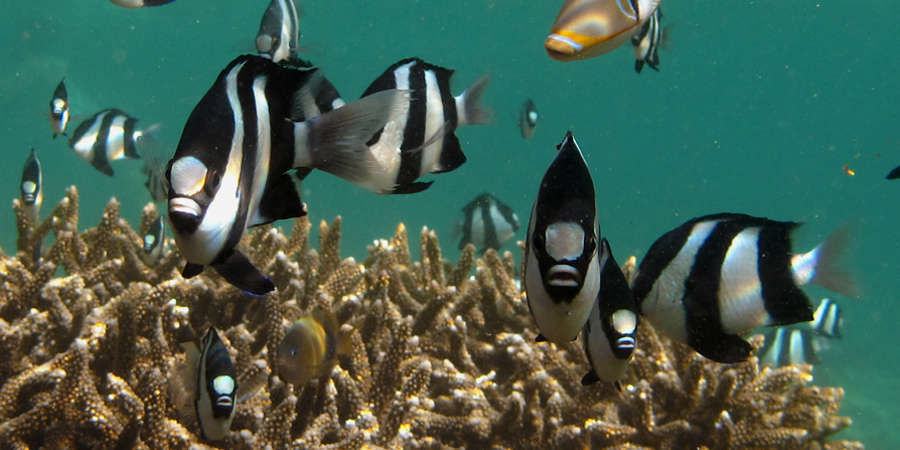
Tank mates of damsels are likely going to need their own spaces here and there, particularly as three stripes can bully their way into food and can also take over space in the tank. Get a tank with plenty of volume if you are adopting damsels of any kind in the first place, and doubly ensure of this if you really want to mix them.
Our advice would be to see how you get on with damsels on their own! Three stripe damsels are lovely to watch and will happily flutter about amongst reef and coral. Therefore, if you’re really not sure who else to bring into the neighbourhood, don’t take any risks.
Do also avoid anything seriously large or predatory – anything like eels or lionfish are going to snaffle up your damsels when you’re not looking, or maybe even when you are!
Black and white humbug reproduction
Black and white humbug reproduction, much like breeding any other damselfish, the males will do much of the courting ritual – in fact, what’s really interesting about these fish is that they will actually set up nests for the females to lay in!
Male damsels will also protect the eggs, too – the three stripe damsel is something of a ‘modern man’ of the saltwater tank, sharing a role in the rearing of children. Once hatched, their young will swim out into the column.
The aggressive nature of the damselfish means that they are fantastic guarding fathers. During breeding, these fish may be even more territorial – so make sure to keep a close eye on any other fish you have in your tank.
Overall, black and white humbugs aren’t hard to sex or breed, meaning that many saltwater fish keepers choose them as a starting point for setting up their own fish farms.
Blue and white striped damselfish
Three stripe damselfish can sometimes get the name blue and white striped damselfish, even though they are technically black and white. That’s because aquarium lighting can sometimes change how their colouring appears.

However, there is no such thing as the blue and white striped damsel in the wild! If you have seen one before, it will have been a black and white humbug under specific lights.
The black and white humbug, or three stripe damselfish, is a rewarding pet that makes for a feisty tank companion. They get a bit of an unfair reputation – yes, they can be aggressive, and they are certainly fiercely protective.
However, they add a lot of character to an aquarium, and are very easy to care for in the first instance. You simply need to be very careful with who they share their tanks with. Otherwise, you might find other fish feeling a bit scared or stressed out.
Why not check out our other guides to damselfish and tropical sea creatures?

